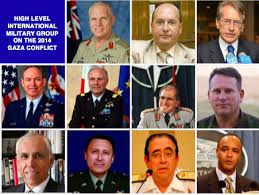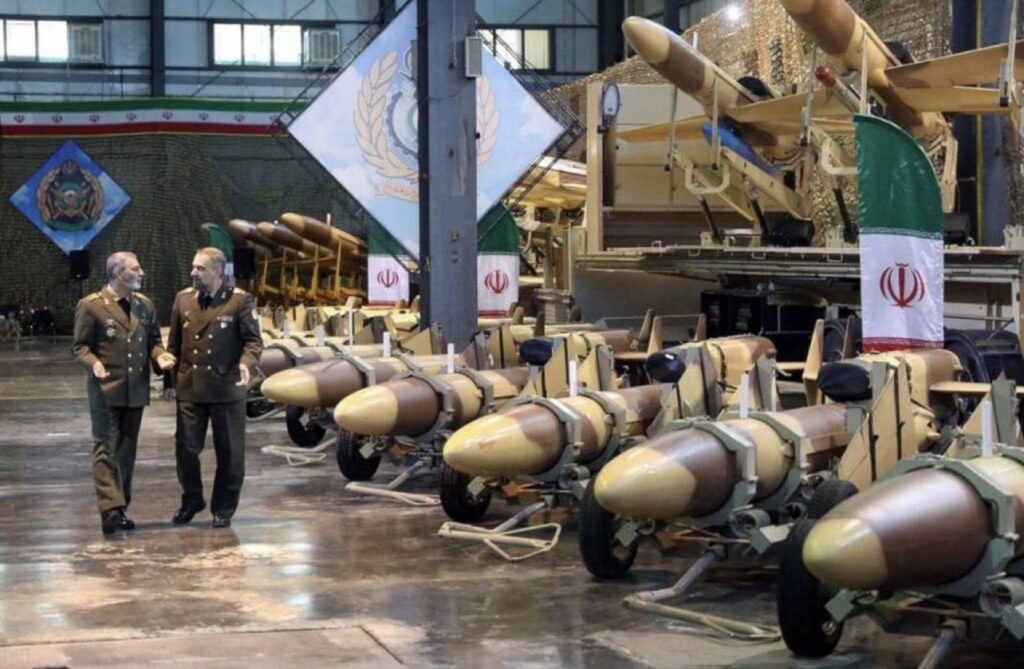UPDATES
The 2014 Gaza War: Top military leaders say Israel “met and in some respects exceeded the highest standards” in its military conduct
Dec 18, 2015 | Or Avi Guy

Or Avi-Guy
‘War crimes’, ‘disproportional response’, and ‘indiscriminate attack’ – the accusations levelled against Israeli defence forces by the chorus of international human rights organisations, the media, the UN human rights council (UNHRC) and the special-investigative-committee-du-jour keep repeating themselves, almost automatically, whenever Israel’s Defence Forces (IDF) act against terror threats along Israel’s borders.
The 2014 Gaza conflict, in which Israel tried to protect its citizens against rocket attacks, as well as terrorists infiltrating from underground tunnels, was no different: The UNHRC published a Commission of Inquiry Report, NGOs including Amnesty International were quick to condemn ‘human rights violations’ allegedly committed by Israel, and their messages, alongside mostly-unchallenged figures and footage from Hamas, were disseminated, often largely uncritically, through many mainstream media outlets.
Now, long after the dust has settled, a group of senior western military officers gathered as an organisation called the High Level Military Group (HLMG), has released its final report on the 2014 Gaza conflict on Dec. 11, after a thorough examination of events and evidence (see here for AIJAC’s blog post about the HLMG’s preliminary report). The report is a professional assessment of Israel’s conduct during the conflict, authored by a group of military experts on the Law of Armed Conflict from Australia, the UK, US, Germany, France, Italy, Spain, India and Colombia- including former NATO chairman General Klaus Dieter Naumann and Australian Major General Andrew James Molan. It is not a populist report, it is not meant to increase viewer ratings or fit an agenda, and it is unbiased. None of the authors are Jewish and several had never even visited Israel before doing so for research preparatory to this report. For these reasons, the report is highly important.
The HLMG, as it describes itself in the report, “was formed in early 2015 with a mandate to examine Israel’s conduct of the 2014 Gaza Conflict […] It is comprised of top-level practitioners from democratic nations whose expertise covers the entire gamut of the conduct of warfare and who are intimately familiar with the battlefield scenarios, operational and legal imperatives, and military and humanitarian duties relevant to the 2014 Gaza Conflict.” Their main focus was on Israel’s adherence to the Law of Armed Conflict (LOAC).
The fact that the members of the HLMG are experienced in warfare, defence professionals and retired high-ranking officers of Western Armies, and that their focus is on rules of combat, is of key significance – it places them in the best position to judge and assess the actions of the Israel military during active conflict with Hamas and other Gaza-based terror organisations.
Other reports have adopted a human rights framework for their assessment and analysis, which is inappropriate and misleading when investigating armed forces in combat, and would in fact condemn virtually any military force engaged in armed combat. In effect, they investigated the IDF’s conduct out of context, as if its actions were not part of an active battle against Hamas, but were like those of a domestic security force dealing with an outbreak of criminality. This led to harsh criticisms against Israel mainly regarding civilian casualties, a sensitive issue that is treated differently under human rights law than according to LOAC.
This point was also raised in a recent article in Times of Israel, which included an interview with Col. Richard Kemp, one of the report’s authors:
“‘[…] The UN and NGO reports were researched from a human rights standpoint and treated the concept of civilian deaths as inherently wrong, even when those incidents occurred under legally acceptable circumstances,’ Kemp said.
“‘human rights law was not the right set of laws to govern this, the laws of armed conflict are,’ he added.”
Kemp explained that this is because under LOAC, armies are expected to minimise as much as possible, and avoid whenever possible, non-combatants deaths, but acknowledges that in wartime, the human rights standard of ‘zero civilian casualties’ is an impossible expectation.
In fact, the HLMG report itself included a comment on the deficiencies and flaws in the previous reports on the 2014 conflict, such as their ‘attempt to impose unwarranted legal norms’ on the IDF:
“In reference to the disparity of our findings with the widely noted condemnations of the IDF’s conduct during the 2014 Gaza Conflict by the United Nations Human Rights Council, (UNHRC) Commission of Inquiry, Amnesty International and other NGOs, and parts of the international media, we believe that, where ideological motivation can be discounted, the principal reason for this disparity is the absence of the appropriate military and legal expertise and judgement.”
From the perspective of LOAC, the HLMG reached important conclusions, in almost complete contrast to the UNHRC report and the NGOs’ allegations against Israel:
Israel and IDF conduct
The HLMG begins by acknowledging in its report the legitimacy of military action to address the threats posed to Israel by Hamas and other terrorist organisations in Gaza:
“No country would accept the threat against its civilian population that these rockets and tunnels present to Israeli population centres.
“Members of the High Level Military Group, some of whom had never visited the country prior to our fact-finding visits, were united in our view that Israel’s efforts were entirely necessary and justified in the defence of that country’s national security. “
Moving on to Israel’s conduct of those military operations, the group concluded in its assessment that Israel not only abided by international law during the conflict, but that the IDF in fact went to great lengths to minimise negative effects of combat on local populations wherever possible in a manner rarely practised by other armies of democratic nations. This was evident both in terms of provision and facilitation of humanitarian relief efforts and in the use of ‘highly innovative tactics’ to prevent civilian casualties such as leafleting warnings of imminent military action , ‘knock on the roof’ measures (i.e. dropping an unarmed missile on a roof as a warning) and pre-strike warning phone-calls:
“We can further be categorically clear that Israel’s conduct in the 2014 Gaza Conflict met and in some respects exceeded the highest standards we set for our own nations’ militaries.”
“The IDF not only met its obligations under the Law of Armed Conflict, but often exceeded these on the battlefield at significant tactical cost […]”
“It [the IDF] fought under restrictive Rules of Engagement and it is obvious that instances existed throughout the conflict where the IDF did not attack lawful military objectives on account of a deliberate policy of restraint.”
Civilian casualties
One of the most sensitive issues in combat in urban environments is civilian casualties. Israel was criticised and condemned for alleged ‘disproportional response’ in the 2014 conflict given the number of Palestinian civilians who died during the conflict, which was much higher than the toll of Israeli civilian casualties, given the advanced anti-missile defensive measures Israel employed to protect its population from Hamas rockets.
The HLMG clarified, from its expert position, the frequent misunderstandings regarding civilian casualties under LOAC and the principle of proportionality which appears in discussions of this issue:
“Under the Law of Armed Conflict incidental or collateral damage when attacking a legitimate military target is accepted in line with the concept of proportionality, adherence to which cannot in any way be determined by considering the relative casualty figures between belligerents in a conflict, which is misleadingly and yet frequently asserted to be the case in this conflict.
“Despite the regrettable loss of innocent life and the damage to infrastructure in Gaza our findings are clear in that the overall outcome of the campaign in Gaza is entirely consistent with the conduct of a professional armed forces operating within the parameters of the Law of Armed Conflict when faced with a scenario such as Israel did in confronting Hamas.”
Hamas
To further explain the number of Palestinian civilian casualties, the HLMG concluded that in its assessment, Hamas’ own deliberate tactics were responsible for the tragic death toll:
“It is important to note that Hamas’s strategic concept actively seeks the death of its own civilians as an advantageous reinforcement of its strategy aimed at the erosion of Israel’s legitimacy.”
“Hamas plainly considers civilian deaths a benefit in terms of aiding its war against Israel in the realm of public opinion.”
The HLMG asserts that Hamas pursued a ‘deliberate unlawful tactic’ by embedding its military operations within the urban civilian infrastructure of Gaza, especially utilising sensitive locations such as UN sites, medical facilities, mosques and schools. They noted that it even situated its operational headquarters in Gaza’s main hospital. From these sites, according to the report:
“Hamas indiscriminately targeted Israeli civilians throughout the conflict with extensive rocket fire and willfully sought to draw the IDF into battle in a prepared urban stronghold amid the Palestinian civilian population in Gaza[…]”
“Hamas thus exploits the advantages of fighting on pre-prepared urban terrain in addition to exploiting the constraints brought about by the IDF’s strict adherence to the Law of Armed Conflict (LOAC).”
By putting the civilian population of Gaza deliberately at risk, the report stress, Hamas “abused the very protections afforded by the law for military advantage.”
At the same time, Hamas cynically used the number of civilian casualties to fight a PR war against Israel – “a deliberate and effective wide-ranging misinformation effort aimed at eroding Israel’s legitimacy.” This PR war, HLMG suggested, included constraining press freedom in Gaza through surveillance and intimidation, coercion of Gaza-based journalists, proactive fabrication of information and visuals, and inflation of the proportion of non-combatants in casualty figures – for example through directives to its operatives about behaviour and language that would portray casualties among its fighters as civilian deaths.
This examination of Hamas’ conduct eventually led the HLMG to conclude that:
“Many of Hamas’s actions clearly amount to serious violations of the Law of Armed Conflict, including war crimes identified by the United Nations such as the summary execution of those it accused of collaborating with Israel.”
Humanitarian Efforts
An under-reported and under-acknowledged aspect of the IDF’s conduct during the 2014 conflict is the provision of humanitarian relief to Gazan civilians throughout the war. The HLMG not only recognised these efforts, largely ignored by both the media and human rights NGOs, but also highlighted how Hamas tried to block them, against the interest and welfare of its own population:
“Throughout the hostilities of the 2014 Gaza Conflict, Israel engaged in extensive humanitarian efforts to aid the civilian population of Gaza […]”
“Many of Israel’s humanitarian efforts went well beyond its obligations, for example, providing electricity and fuel to Gaza, in spite of their military use by Hamas, operating the crossing points for humanitarian aid convoys while under fire from inside Gaza and setting up a field hospital for Gaza residents.”
“Hamas actively sought to obstruct these efforts, preventing its population from making use of the medical facilities Israel provides, firing at crossings to deliberately impede the transfer of humanitarian supplies as well as at civilian workers working to repair the lines supplying electricity to Gaza.”
The HLMG report is a thorough review and assessment of the conduct of the Israel defence forces during the 2014 conflict with Gaza. Authored by military experts and professionals with in depth knowledge and experience in warfare and the LOAC, it concluded that Israel met, and at times exceeded, its obligation under international Law of Armed Conflict at least as well as other Western armies would have in a similar situation.
Indeed, the HLMG actually expresses concern that Israel’ standards may have been too high- setting an unreasonable bar for other armed forces to trying to meet if made universal.
The report lists implications and potential lessons for other armies facing the challenges of battle against ‘hybrid movements’- organisations with both state-like and non-state attributes that combine traditional military warfare with terrorism. The HLMG’s main concern in this regard is that other Western armies are going to struggle to keep up with the IDF’s high standard in terms of minimising civilian damage and casualties:
“[…] the actions and practices of the IDF to prevent collateral damage were so extensive, over and above the requirements of the Law of Armed Conflict, that they would curtail the effectiveness of our own militaries, were they to become constraining norms of warfare enacted in customary law.”
This would seem more definitive than the efforts of human rights groups which write reports overwhelmingly without the benefit of significant military experience, and with an ideological predisposition to interpret international law as restrictively as possible- both in general and with respect to Israel in particular. Yet the mainstream media will likely largely fail to report on these important findings.
Tags: Israel











